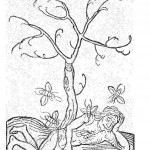I had a lovely conversation with Philip Adams of Australia’s national public radio program “Late Night Live” today, about malaria, the fall of Rome, and the bother of mosquito nets. You can check it out here.
Category: Books (Page 4 of 9)
For Ms. Magazine. Ms. holds a place near to my heart for being the first national magazine that published my writing, way back in the early 1990s.I will be occasionally blogging for their new Ms. blog (which makes me, ahem, “Ms. Blogger”). Here’s a link to my first post, on how a Microsoft exec’s recent TED lecture exploits the suffering of millions of African women and children:
http://msmagazine.com/blog/blog/2010/03/08/ted-lecturer-exploits-african-womenchildren/
Check it out, make a comment, let me know what you think!
The Malaria Consortium is putting on a 8-week exhibition of photographs featuring malaria at the UN headquarters in New York in advance of World Malaria Day on April 25. This weekend, the New York Times featured a selection of the photos, with a brief article on the history of the scourge. Check it out here.
The captions on the photos are the best part. Note that the mosquito-catching technique featured in slide 5 is pretty controversial. Using humans as live bait for malarial mosquitoes can certainly endanger them. I also found the quote on slide 9, which pictures two Nigerian children recovering from malaria (mostly naked, on a shorn mattress), quite telling. The father of the children describes their illness and treatment and then says, “It is not that we are not concerned, it is just normal.” A hint of the social reality of malaria in Africa, where people think of malaria the way we think of the flu–completely undermined by the story told by the dark, shadowy photograph alongside it.
Add King Tut to the list of famous personages felled by malaria. Tut died at age 19 in 1324 BC. According to a new study in JAMA, scientists have found genetic evidence of Plasmodium falciparum lurking in his mummy.
Tut’s a famous guy but he isn’t malaria’s earliest known victim–not by far.
Tut died some two thousand years ago. In 1994, scientists found antigens to plasmodium parasites in 5,000-year-old Egyptian and Nubian mummies. Check it out here. References to malaria have also been found in 4,000-year-old Sumerian and Egyptian texts. But we know malaria’s been a much older scourge than that, thanks to molecular clock techniques that analyze the parasite’s genome. We’ve probably had it since we descended from apes.
<a name=”fb_share” type=”button_count” share_url=”http://soniashah.org/2010/02/malaria-killed-king-tut-among-other-ancients/” href=”http://www.facebook.com/sharer.php”>Share</a><script src=”http://static.ak.fbcdn.net/connect.php/js/FB.Share” type=”text/javascript”></script>
Attention all! I have (finally) created a Facebook page for my writing. Please come visit me on Facebook!
There is also now a Youtube channel on my work. Check it out at:
http://www.youtube.com/user/soniashahauthor
So my new book is now officially titled, “The Fever: How Malaria Ruled Humankind for 500,000 Years.” Hoowee! Meanwhile I’m working on a new piece on emerging infections from animals (called “zoonoses”), such as Ebola, Nipah virus, Hanta and West Nile. It’ll be appearing in a cool new online enviro magazine called “e360” which features some of my favorite writers–Carl Zimmer, Elizabeth Kolbert and others. Check it out at e360.com
Thrilled to announce that my new book on the political history of malaria has been completed and is slated to come out from Farrar, Straus & Giroux in the late spring of 2010! Check here for more details, forthcoming. Tentative title: “The Half-Million Year Fever: The Story of Malaria.” Got a better idea? Email me at sonia@soniashah.com.
My op-ed reflecting on World Malaria Day (April 25) appeared on Alternet, Z Net and on The Mutiny. Enjoy!
Just did several interviews for the Spanish press, and received positive reviews on the Spanish edition of The Body Hunters from El Pais, Cambio 16, and Marie Claire magazine. Nice!
The Spanish edition of The Body Hunters (Cazadores de Cuerpos) recently came out and is getting some good press in Spain. To wit: a long review (and five stars!) in Publico. Check it out here.















